Every day, Hartford HealthCare colleagues perform heroic acts large and small as part of our mission to help people. What we’ve found, however, is that for our HHC colleagues, helping is not just their jobs — it’s part of who they are. We’re sharing stories of heroism on behalf of some colleagues, plus a nod to those who protect our campuses and us each day as public safety officers, and, lastly, a look at the theory of bystander intervention and why some people will help strangers in need. If you know of a heroic act performed outside of work by a colleague, please email me at susan.mcdonald@hhchealth.org.
Heroes are in the Right Place at the Right Time
By Maggie Werner
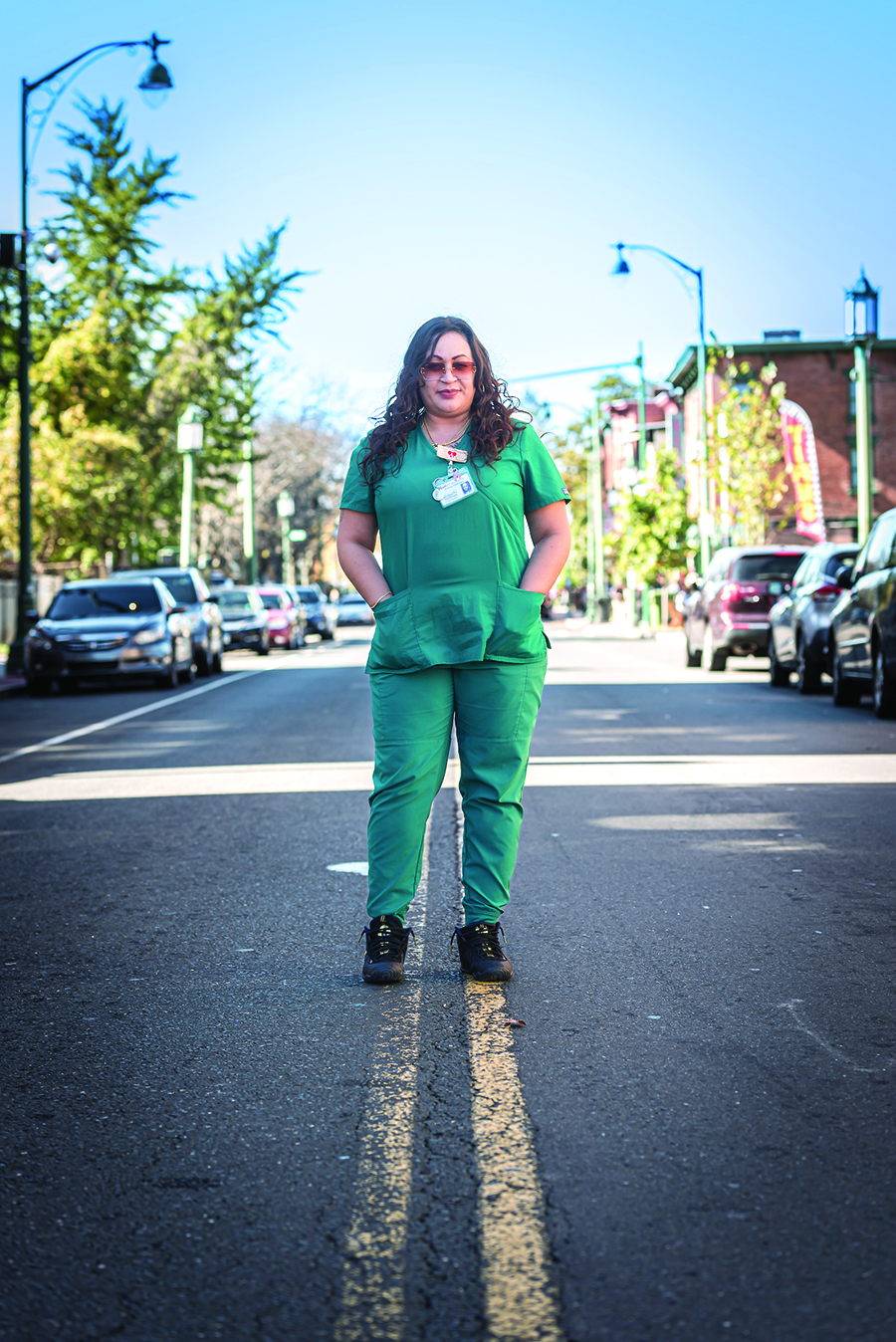
Thursday, July 20, 2023, began like any other for Cindy Valentin — the sun was shining and birds chirping as she went to work as a medical assistant in Hartford Hospital’s Urogynecology Department.
She left around 5 p.m. (later than usual), heading to a friend’s house, a different route than usual. About seven minutes into the drive, she hit traffic and grumbled about bad luck.
As traffic chugged along Park Street in Hartford, Valentin noticed a man directing traffic to the left, keeping cars from going straight or right. She peered a bit closer and saw a man lying unconscious in the street.
Her adrenaline kicking in, she was out of her car in seconds and dialing 911. Another woman, Jane Wilson, did the same.
Luckily, Wilson had a CPR kit and, together, the women performed life-saving measures on the man. As time went on, the man’s lips and fingers turned blue and Valentin couldn’t find a pulse. She asked the gathering crowd for Narcan because she suspected an overdose.
After administering the Narcan, the women continued CPR, stepping aside only when EMTs arrived and took over. Valentin and Wilson waited anxiously until the man’s blue eyes opened wide as he gulped for air. They bumped shoulders and smiled, knowing they had just helped save his life.
In talking with Wilson, Valentin found out she had also taken an alternate route that day, which gave her the chills. Reflecting on that day, she says she’d repeat it all in a heartbeat. Anybody’s life, she says, is worth saving because there is someone who loves them.
Yet, Valentin is quite modest when it comes to being hailed a hero, brushing off the label. While others consider her act heroic, to her, it’s just who she is.
Heroes Jump Out to Help, Without Thinking Twice
By Elissa Bass
On any given morning, Route 2 in Norwich is jammed with Backus Hospital colleagues on their way to work. That turned out to be good luck for those involved in a fiery June car accident.
Alexander Miano, MD, a psychiatrist with Hartford HealthCare’s Behavioral Health Network, was heading in from his Stonington home when two cars in front of him suddenly slammed into the highway median. Respiratory therapist Amy Jodoin, in a nearby car, saw it too.
Both pulled over and rushed to help.
Dr. Miano approached a badly damaged SUV with an elderly woman trapped in the driver’s seat. An elderly man was stuck beside her. With other drivers who stopped, he helped pull them out. Jodoin went to the second vehicle, where a woman appeared to be in shock.
“I blurted out, ‘Hi, my name is Amy, are you OK? Your car is on fire, we gotta get you out of here!’” She then noticed the driver of the SUV had returned to the wreckage to rescue her dog from the backseat.
“I pulled the curtain airbag out of the way so she could get her dog,” Jodoin recalls.
Meanwhile, Dr. Miano fashioned a tourniquet using his necktie to stop bleeding on the man’s leg. Both colleagues consoled the injured until fire and ambulance crews arrived and transported them to the Backus Emergency Department.
Dr. Miano dismisses words like “hero” and “lifesaver.”
“I think anyone would have done this,” he says.
“I’m just glad I was there. It’s not just the right thing to do, it’s the human thing. It was just an act of human kindness.”
Would he do it again?
“Of course I would,” he says. “Without a second thought. It is what we all are brought to do under dire situations.”
Jodoin agrees.
“Heroes, in my eyes, are my coworkers, not just respiratory therapists, but all members of the interdisciplinary team who bring different aspects to the healthcare arena for the best care of our patients,” she says. “I don’t want to overlook first responders — they are everyday heroes. Fire, EMS, police — they go willingly into the unknown to rescue and transport patients.”
The City of Norwich honored the two Hartford HealthCare colleagues, declaring July 17 as Dr. Alex Miano and Amy Jodoin Day.
“They put their own lives on the line to save two people and a family dog,” Norwich Mayor Peter Nystrom says. “The Rose City is proud of them for their courage.”
The experience changed her, Jodoin says. If presented with a similar situation in the future, would she react the same way?
“I have a 3-year-old who I had just dropped off to daycare 10 minutes prior to this,” she recalls “If he was in the car, I wouldn’t have hopped out for his safety. If I was alone in the future, I would do whatever I could to ensure the person was safe and received the care they needed.
“I would hope if I or a member of my family was in trouble someone would be a kind human and help. This is a new philosophy I have incorporated into my teaching of new respiratory therapists: Be a kind human. You never know when the opportunity to help someone will arise.”
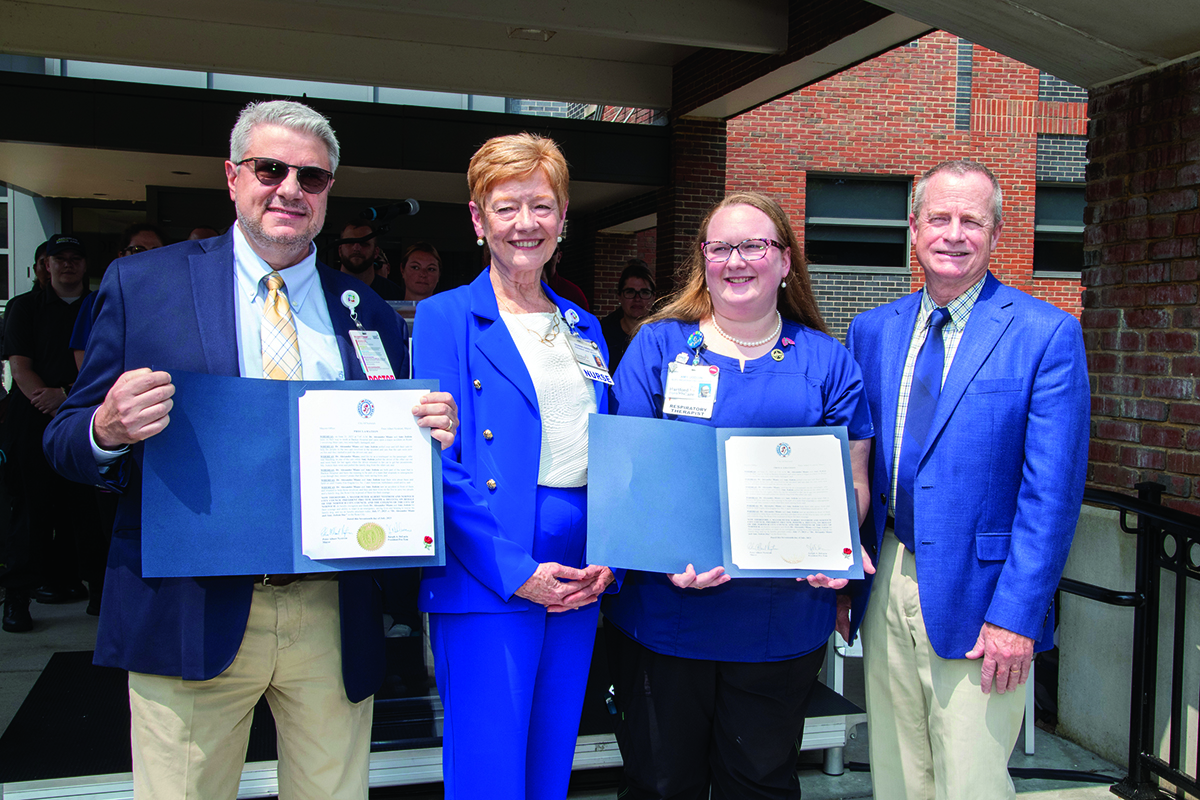
Heroes Give of Themselves
By Elissa Bass
What would you do to help a stranger?
A. Help them across a busy intersection?
B. Hold open a door?
C. Let them cut you in line at the grocery store?
D. Give them one of your kidneys?
For Andrea LaRue, Wendy Clark and other Hartford HealthCare colleagues, the answer, without hesitation, is D.
In the last year, several colleagues announced they needed lifesaving kidney transplants and even more stepped up to offer theirs. As of November, four colleagues awaited a kidney transplant and 10, three of whom work in the transplant department, had donated a kidney.
Sixty-year-old Clark, a surgical services nurse educator at Windham Hospital, donated a kidney in July on behalf of Lucienne “Lucy” Donofrio, a medical assistant at Hartford HealthCare Medical Group’s General Surgery Department in Hartford.
LaRue, a 34-year-old medical assistant in the Hartford Hospital Colorectal Department, donated a kidney in August on behalf of Sanjay Banerjee, MD, a psychiatrist with the Institute of Living.
Both say that as soon as they heard about the need, they knew they wanted to help.
Clark was inspired after reading Donofrio’s story in Heartbeat, the systemwide weekly newsletter. Diagnosed with type 1 diabetes at 16 that developed into diabetic kidney disease as an adult, Donofrio experienced severe kidney damage after the 2016 birth of her daughter Giovanna. She was on dialysis.
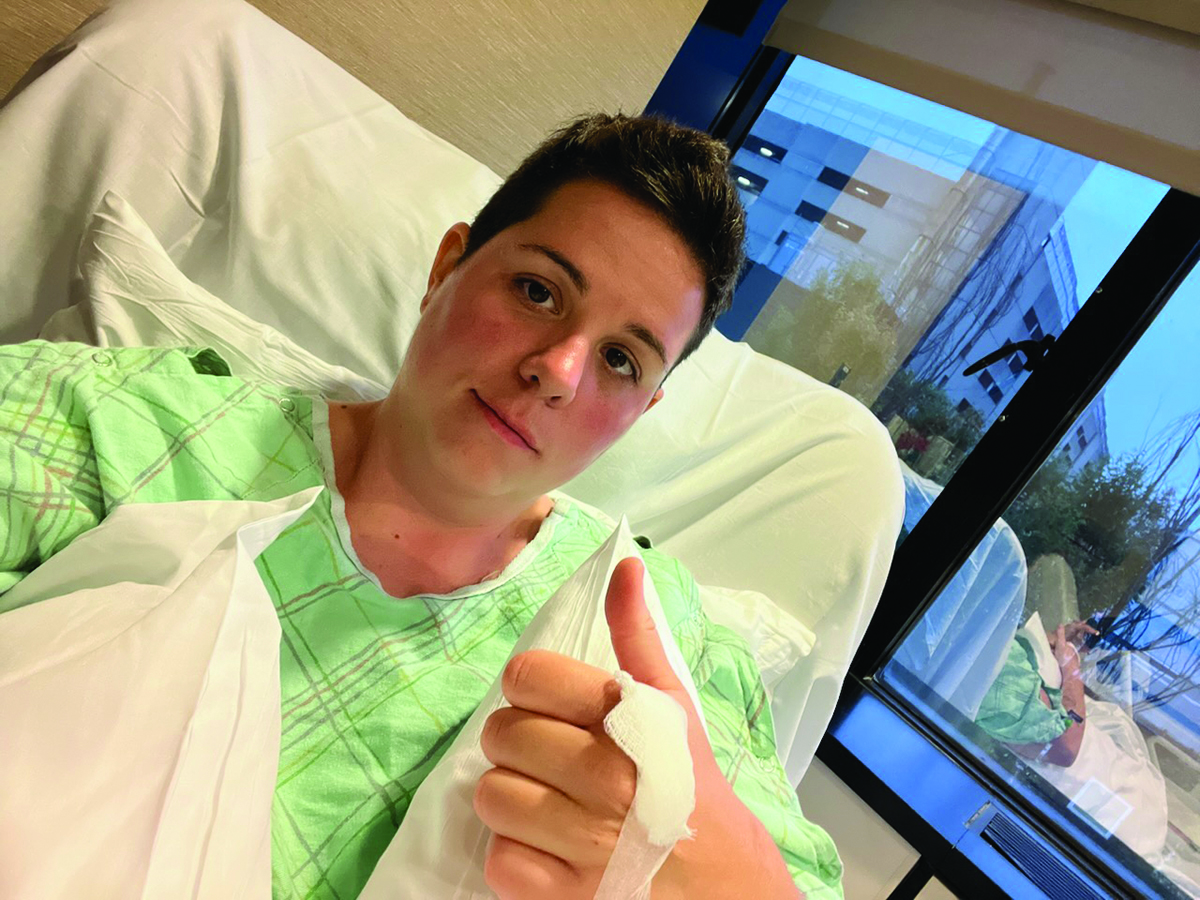
“She’s 38 years old, she’s got a 7-year-old, and she needs a kidney,” Clark says. “I’ll tell you it was the photos of her with her daughter that did it for me. I thought, ‘I have to help.”
As of November, Donofrio was still awaiting her transplant.
LaRue was also inspired by Donofrio’s story, but after she was set for transplant, she switched to benefit Dr. Banerjee, who had his transplant in the fall.
When signing up, LaRue was told her BMI was too high to donate so she changed her eating and exercise habits to lose 35 pounds.
“I needed to get healthier to help someone else, so that’s what I did. I felt like I was meant to be on this Earth for a reason, and this was my reason,” she says.
If you ask Asamoah “Azzy” Anane, living donor transplant coordinator at Hartford Hospital, why so many colleagues step up to donate, it’s because of who they are at their core.
“We are in the healthcare business,” he says. “People who get into healthcare want to help other people and 80% of our donors have been nurses. These are people who naturally want to help others. Then they read the stories, they’re touched and they call.”
Hartford HealthCare provides donors a sixweek enhanced disability benefit to colleagues who donate an organ at their regular rate of pay. Colleagues who act as living donors are not required to use a week of PTO before becoming eligible for disability leave. (Learn more on the Leaves of Absence page of HHC Connect).
There is no cost to the donor for the testing, procedure or two years of follow-up care involved in kidney donation, Anane explains.
Under the living donor system, donors don’t have to “match” with the intended recipient to help them. Working with the National Kidney Registry, donors provide kidneys to someone who is a match.
The HHC colleague then becomes eligible for a donation from someone who matches them.
For LaRue, life has returned to normal. She’s back at work and feels great.
“I don’t feel like I’m missing anything,” she says. “I kind of forget I had this major surgery and I’m missing a piece of myself. Now it’s helping someone else feel good and live their life. I was able to give somebody extra time. It’s an honor.”
Clark finds the experience as life changing for her as the person who has her kidney. She plans to be “the poster child for kidney donation. If I can do this at 60, a lot of people can do this. This has been a very profound journey for me. I am an educator at heart and this will be my new cause.”
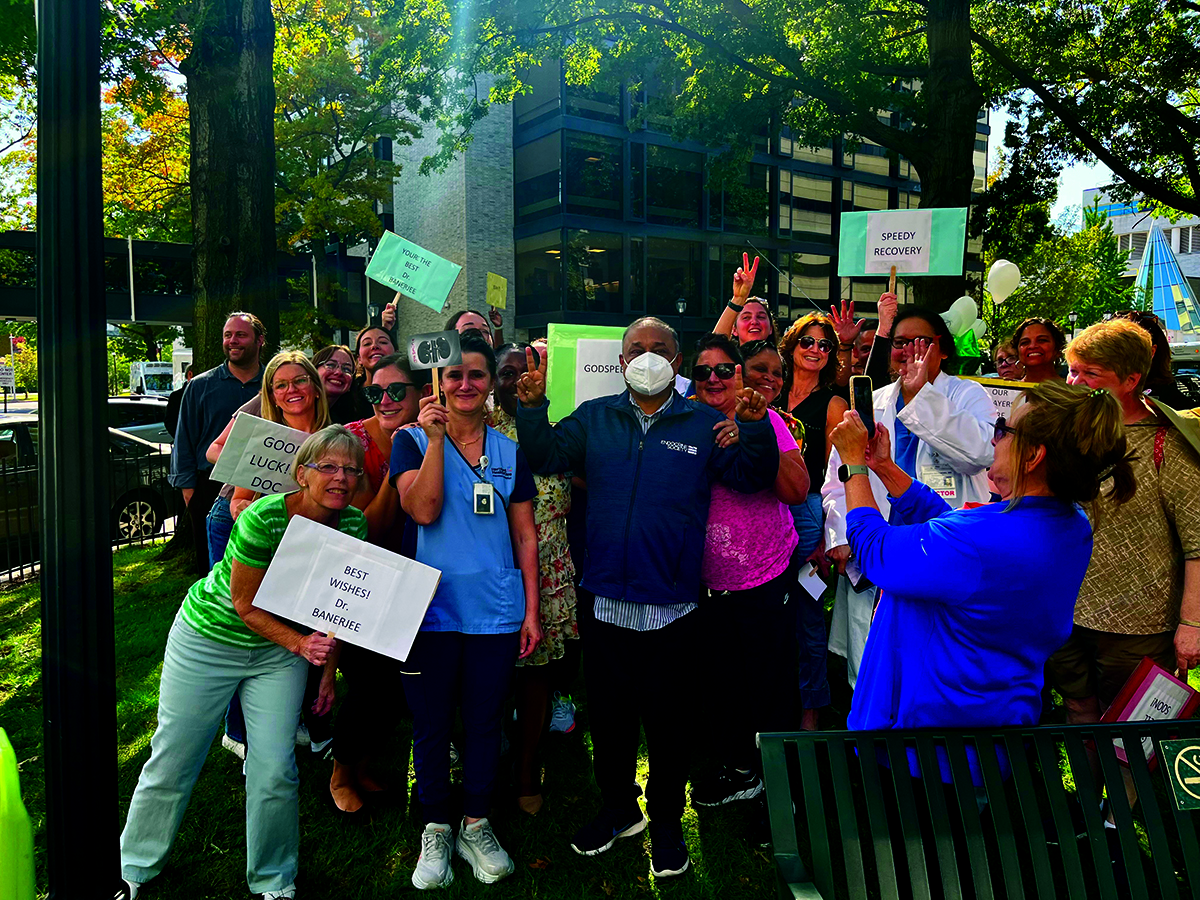
Heroes Show Up Every Day
By Susan McDonald
Every day, Hartford HealthCare colleagues, patients and visitors rely on uniformed public safety officers to keep them and the environment safe.
During Public Safety Week in the fall, Patrick Turek, senior system director of public safety and emergency management, recognized our public safety colleagues of the year.
Congratulations to:
- Duane Corey, St. Vincent’s Medical Center
- Adriana Figueroa, Windham Hospital
- Michael Mirmina, The Hospital of Central Connecticut
- James Pollard, Backus Hospital
- Victor Sanchez, Hartford Hospital
- Peter Towne, Charlotte Hungerford Hospital
- Michael Wright, MidState Medical Center
Lifesaving Awards were given to:
- Phillip Brown, MidState Medical Center, “for his unwavering actions in assisting a family and infant suffering from a seizure into the hospital’s Emergency Department.”
- Craig Getter, Backus Hospital, “for his quick and competent use and also being the first HHC public safety officer to deliver Narcan to revive someone in great medical need.”
- Orlando Maldonado, Jasmine McCall, Jeymar Soto, Anthony Hines, St. Vincent’s Medical Center, “for their heroic actions and placing themselves in harm’s way to prevent a patient from harming others or taking her own life with an edge weapon.”
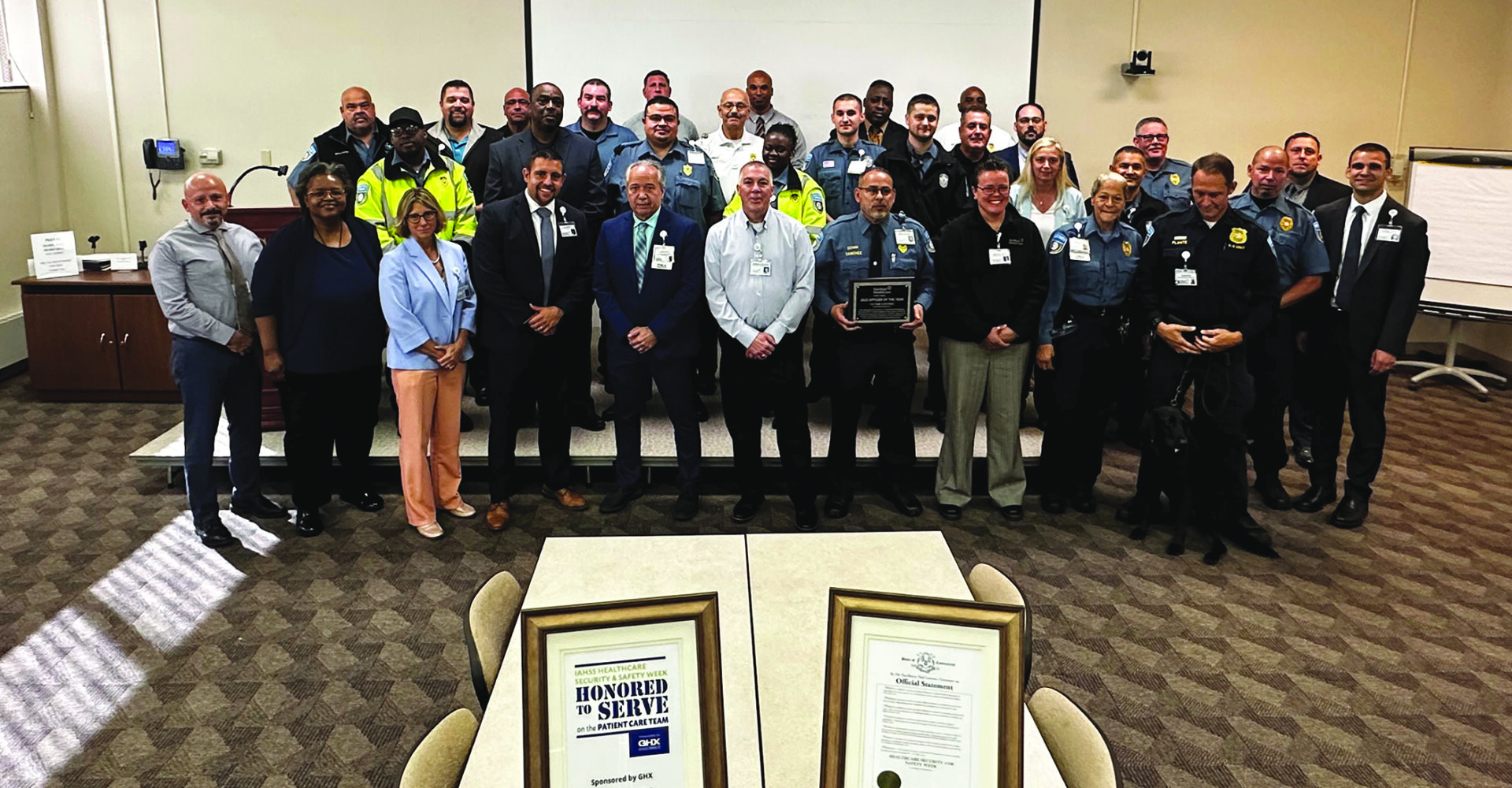
Heroes Tune into Trouble
By Elissa Bass
Kalee Latham finally got up early enough one Thursday morning to take her golden retriever Marley for a good walk before heading to work as an outpatient clinician at the Institute of Living.
Turns out Marley didn’t get much of a walk, and the 29-year-old ended up late because they very well may have saved a life.
As Latham started on a trail she walks frequently, a man stopped to tell her that a young woman was sitting on top of a bridge, looking as if she might jump. Latham ran in that direction.
“I said, ‘Hey, you OK? Do you need any help?’ She wouldn’t look at me. I asked her name, I said my name is Kalee and this is Marley. I just kept talking, making small talk. She had on a concert t-shirt, and I talked about music. Little by little, she looked at me,” Latham recalls.
A passing cyclist stopped to help, and she quietly asked him to call 911, not wanting to upset the young woman by using her own phone to call.
“I told her I know what it’s like when your upbringing is tough, but there is a good part in life and if she would come back onto the bridge we could talk about how to get there,” Latham says.
After about 25 minutes, the woman climbed down, walking with Latham and Marley toward the trail entrance. When police arrived, Latham took Marley home.
“I’m not a morning person,” she says, “but my adrenaline was really going after that! I had an 8 o’clock meeting and I was trying to get in touch with my boss to explain why I wasn’t there.”
While she doesn’t know for sure if the story ending is ultimately happy, Latham says it’s a lot like work she does every day at the IOL.
“I’m glad I was there. I’m glad she trusted me. I’m glad she got off that bridge,” she says. “With my patients, I don’t always know what happens afterward, but I always hope for the best. And I hope she got connected to the treatment she needs,” she says.

Heroes Stay Prepared and Respond Quickly
By Elena Bisson
Monique Cobbs, Hartford HealthCare at Home clinical manager, planned to spend the day in her office supporting a new colleague, instead of out in the field where she usually works.
Settling into a desk, she heard someone urgently call out, “Is there a nurse here? She’s not breathing!”
Cobbs ran toward the commotion, discovering a colleague slumped in her chair. Checking for a pulse, Cobbs found none and quickly prepared for CPR by guiding the woman to the floor. In moving, the woman emitted a small gasp, indicating return of a weak pulse.
Switching gears, Cobbs started sternal rubs, a technique designed to produce a painful reaction and bring patients to consciousness. As the woman gradually awoke, she mentioned feeling chest pain and cold. Maintaining her composure, Cobbs directed the office staff to wrap her in jackets to keep her warm. Throughout, Cobbs kept the colleague conscious until the paramedics arrived.
Asked about her instinct to get involved, Cobbs downplays her actions, attributing them to the inherent nature of a nurse.
“I am a nurse. There is nothing in me that wouldn’t have wanted to help,” she explains. Reflecting on the experience, she emphasizes the importance of being prepared.
“You have to always be ready to help, expect the unexpected. Public, office, parking lot emergencies aren’t preplanned. It feels good to know what I can do to help, what is within my expertise,” she says.
Despite being called a hero, Cobbs modestly states, “I don’t feel like my actions were heroic. I feel like they were me stepping up to what I am trained to do.”
The entire office team — including the person initially calling for help — were key, she adds.
“Do you have to know how to be a surgeon and do the things you see on TV? No, because that is not realistic. Even if it is talking to someone, holding someone’s hand, comforting someone’s child while they are having an emergency. The smallest things mean the world to someone in crisis. Anyone can be the hero if they remember that. It’s just about being there, stepping up and doing what you can to support and bring someone to the care they need,” Cobbs says.
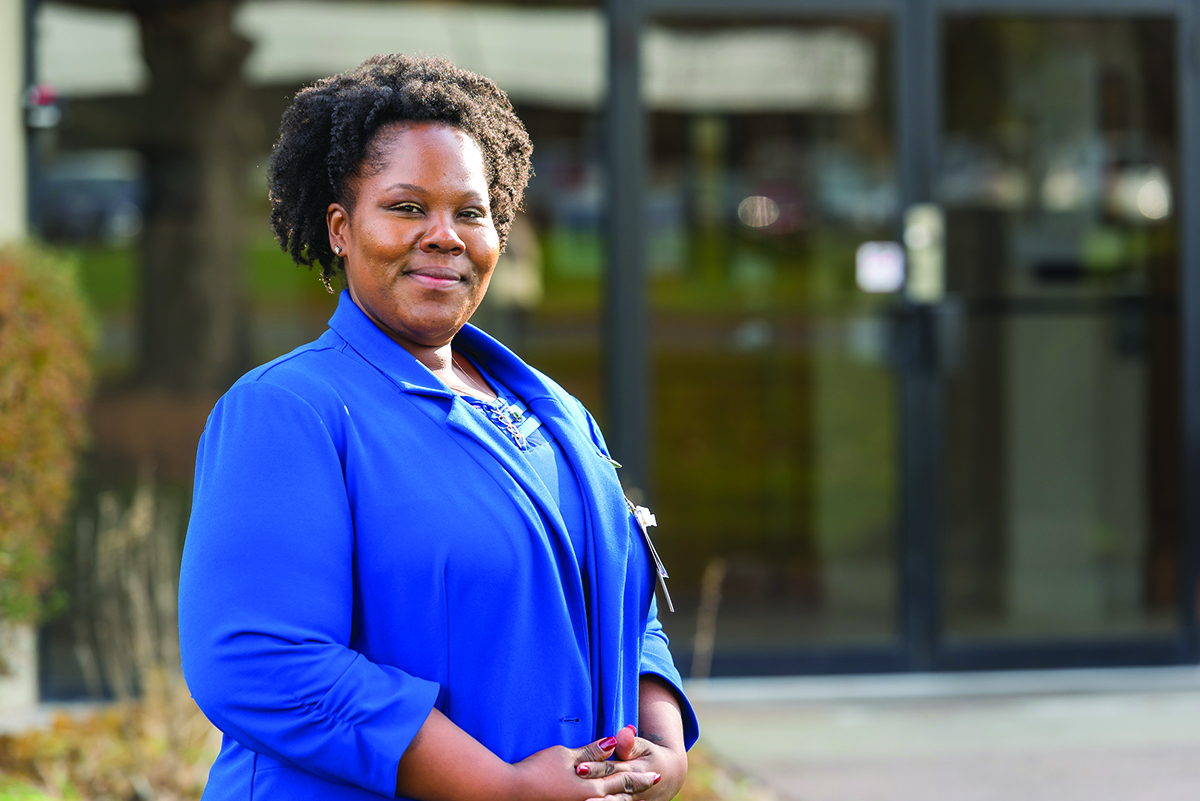
Healthcare Workers Make Natural Heroes
By Susan McDonald
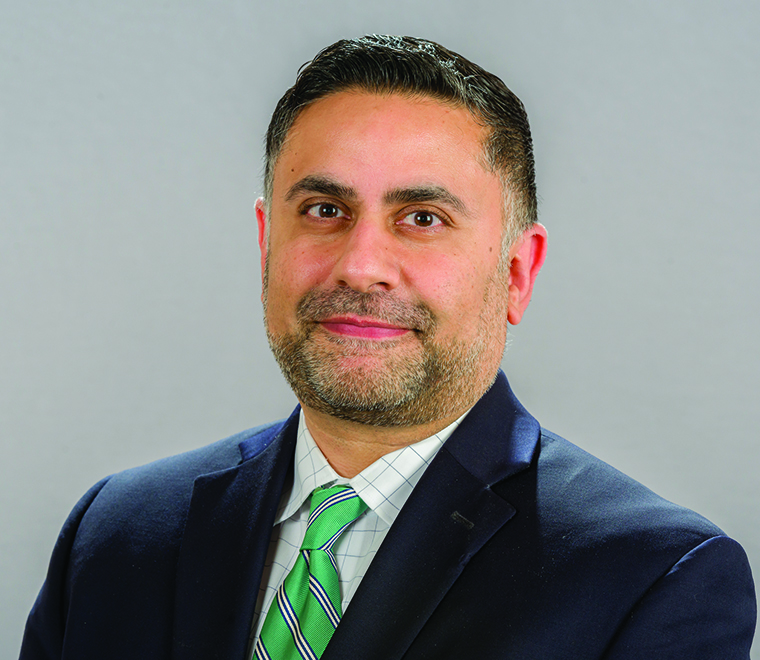
There are two kinds of people who witness emergencies — those who jump in to help and those who do not.
Good Samaritans pull people from burning cars, chat with distraught people and help reunite lost children with parents. Their response, rooted in psychology and the very essence of who they are, can be explained by the bystander intervention theory, says Javeed Sukhera, MD, PhD, chair of psychiatry at the Institute of Living.
“It describes how people recognize a situation and lean into it, intending to make it better,” he explains.
Healthcare workers are logical good samaritans, feeling the same pull that draws them to their work.
“They have a calling and desire to be helpful. They are more natural helpers who are unable to tolerate something negative happening if they feel they can be useful,” Dr. Sukhera says.
Despite increasing trends that suggest more people are likely to jump in and help, fear remains for some more than others. There are various reasons people are afraid to step in to help. Research, he says, suggests bystanders are more likely to step into situations they do not perceive as potentially dangerous.
“At the beginning of the pandemic, we learned of resident doctors reacting to how some groups were being treated differently. They naturally learned to do extra for these people,” Dr. Sukhera notes. “But, research also found that the residents engaged in advocacy in a constrained way because they didn’t want to get in ‘trouble’ for actions that might go against the norm.”
Personally, he has stopped after witnessing a motorcycle accident, calling 911 and waiting with the driver until an ambulance arrived. Yet, he acknowledges there are many healthcare professionals who still fear potential litigation or risk. Nonetheless, he suggests they are built to be helpers.
“That is who we are — we are healers and are programmed to bring our positive energy into the world,” he says.
